Hungary is a landlocked country in Central Europe. Its capital, Budapest, is bisected by the Danube River. Its cityscape is studded with architectural landmarks from Buda’s medieval Castle Hill and grand neoclassical buildings along Pest’s Andrássy Avenue to the 19th-century Chain Bridge. Turkish and Roman influence on Hungarian culture includes the popularity of mineral spas, including at thermal Lake Hévíz.
Austria-Hungary collapsed after World War I, and the subsequent Treaty of Trianon established Hungary’s current borders, resulting in the loss of 71% of its territory, 58% of its population, and 32% of ethnic Hungarians.Following the tumultuous interwar period, Hungary joined the Axis Powers in World War II, suffering significant damage and casualties. Postwar Hungary became a satellite state of the Soviet Union, leading to the establishment of the Hungarian People’s Republic. Following the failed 1956 revolution, Hungary became a comparatively freer, though still repressive, member of the Eastern Bloc. The removal of Hungary’s border fence with Austria accelerated the collapse of the Eastern Bloc, and subsequently the Soviet Union. On 23 October 1989, Hungary became a democratic parliamentary republic.
Hungary’s countryside includes some of the most beautiful scenery to be found anywhere in Europe. In fact, wherever you are in Hungary, you’re never far from spectacular mountains and lakes, beautiful river scenes (the Danube runs right through the country), and lush valleys. All of these stunning backdrops also provide many great opportunities for adventure sports enthusiasts, including hiking, biking, climbing, camping, and other outdoor activities.
1.The Danube River
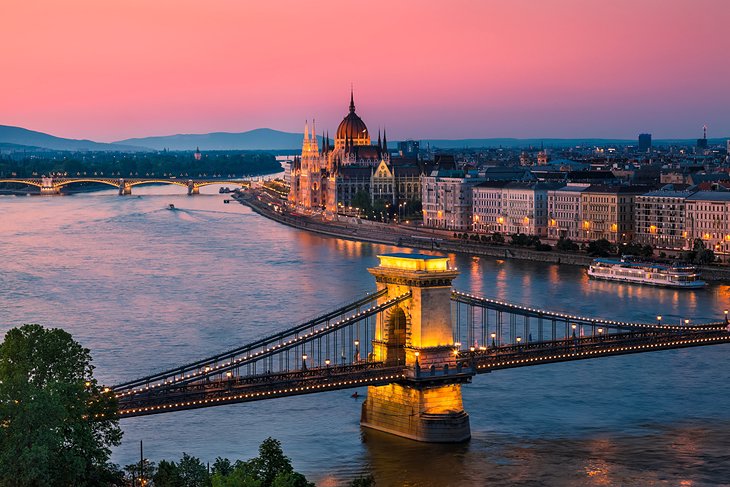
The Danube is the second-longest river in Europe, after the Volga in Russia. It flows through much of Central and Southeastern Europe, from the Black Forest into the Black Sea.
The Danube was once a long-standing frontier of the Roman Empire and today is the river running through the largest number of countries in the world (10; the Nile is second with 9). Originating in Germany, the Danube flows southeast for 2,850 km (1,770 mi), passing through or bordering Austria, Slovakia, Hungary, Croatia, Serbia, Romania, Bulgaria, Moldova and Ukraine before draining into the Black Sea. Its drainage basin extends into nine more countries. The largest cities on the river are Vienna, Budapest, Belgrade and Bratislava, all of which are the capitals of their respective countries. Five more capital cities lie in the Danube’s basin: Bucharest, Sofia, Zagreb, Ljubljana and Sarajevo. The fourth-largest city in its basin is Munich, the capital of Bavaria, standing on the Isar River.
Important tourist and natural spots along the Danube include the Wachau Valley, the Nationalpark Donau-Auen in Austria, Gemenc in Hungary, the Naturpark Obere Donau in Germany, Kopački rit in Croatia, Iron Gate in Serbia and Romania, the Danube Delta in Romania, and the Srebarna Nature Reserve in Bulgaria.
Also, leisure and travel cruises on the river are of significance. Besides the often frequented route between Vienna and Budapest, some ships even go from Passau in Germany to the Danube Delta and back. During the peak season, more than 70 cruise liners are in use on the river, while the traffic-free upper parts can only be discovered with canoes or boats.
2.Esztergom Basilica
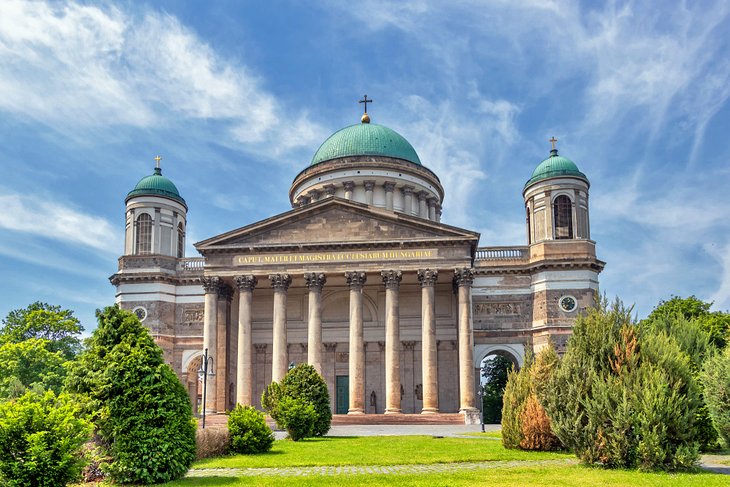
The Primatial Basilica of the Assumption of the Blessed Virgin Mary and St Adalbert, also known as the Esztergom Basilica, is an ecclesiastic basilica in Esztergom, Hungary, the mother church of the Archdiocese of Esztergom-Budapest, and the seat of the Catholic Church in Hungary.
The altarpiece (13.5 × 6.6 metres, depicting the Assumption of the Blessed Virgin Mary, by Girolamo Michelangelo Grigoletti) is the largest painting in the world painted on a single piece of canvas.
The basilica is also known for Bakócz Chapel (named after Tamás Bakócz), built by Italian masters between 1506–1507 out of red marble of Süttő, its walls adorned with Tuscan Renaissance motifs. It is the most precious remaining example of Renaissance art in Hungary.
The huge crypt, built in Old Egyptian style in 1831, is today the resting place of late archbishops, among others, József Mindszenty, famous for his opposition to both Nazi and Communist rule.
The building of the present church took place on the foundation of several earlier churches. The first was built by Stephen I of Hungary between 1001–1010 (as the original Saint Adalbert church), the first cathedral in Hungary, which was burned down at the end of the 12th century. It was rebuilt, and even survived the Mongol invasion of Hungary. However, in 1304, Wenceslaus III, a probable candidate for the Hungarian throne, sacked the castle and the church. It was repaired in the following years. The archbishops of the 14th and 15th century made the church more ornate and added a huge library, the second most significant one in the country.
3.Hungarian Parliament Building, Budapest
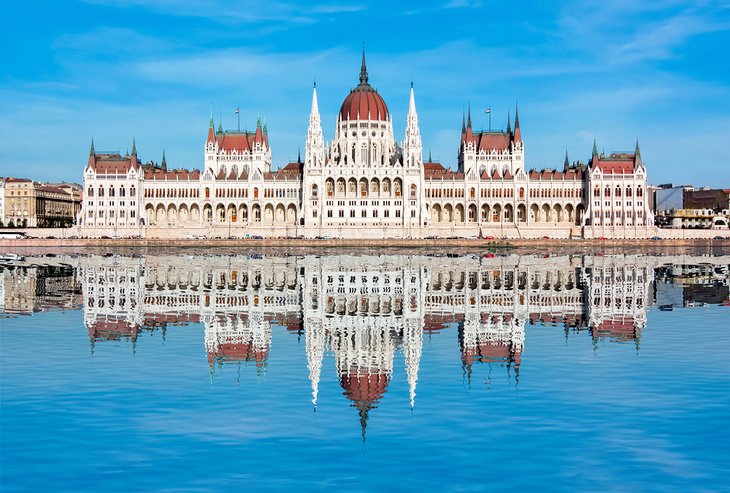
The Hungarian Parliament Building, also known as the Parliament of Budapest after its location, is the seat of the National Assembly of Hungary, a notable landmark of Hungary, and a popular tourist destination in Budapest.
The architectural style of the Hungarian parliament building was influenced by the gothic Vienna City Hall, the renaissance elements like the cupola was influenced by the Maria vom Siege church in Vienna.
The Parliament Building is built in the Gothic Revival style; it has a symmetrical façade and a central dome. The dome is Renaissance Revival architecture. The parliament is also largely symmetrical from the inside, with two identical parliament halls on the opposing sides of the building. One of the two halls is still in use today for sessions of the Hungarian National Assembly, the other for ceremonies, conferences, and guided tours. It is 268 m (879 ft) long and 123 m (404 ft) wide.
Budapest was united from three cities in 1873, namely Buda, Óbuda, and Pest. Seven years later the Diet resolved to establish a new, representative parliament building, expressing the sovereignty of the nation. The building was planned to face the Danube River. An international competition was held, and Imre Steindl emerged as the victor; the plans of two other competitors were later also realized in the form of the Ethnographic Museum and the Hungarian Ministry of Agriculture, both facing the Parliament Building. Construction from the winning plan was started in 1885, and the building was inaugurated on the presumed 1,000th anniversary of the country in 1896. The keys to the building being handed over in 1902, however, It was not fully completed until 1904. The architect of the building first went blind and then later, died before its completion.
4.Tihany
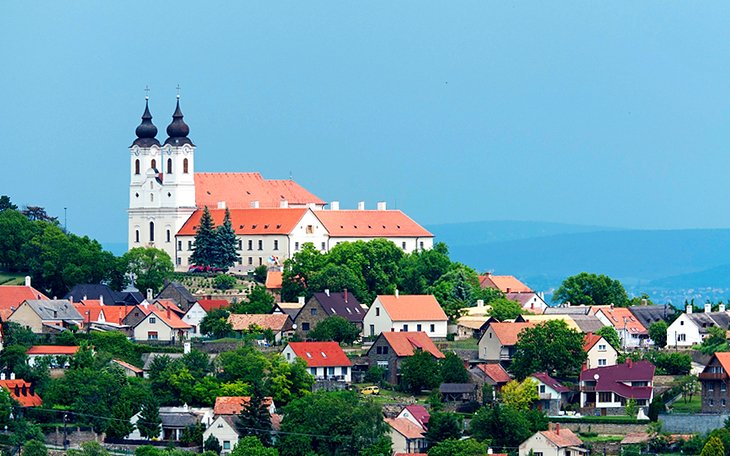
Tihany /ˈtihɒɲ/ is a village on the northern shore of Lake Balaton on the Tihany Peninsula. The whole peninsula is a historical district. The center of the district is the Benedictine Tihany Abbey, which was founded in 1055 AD by András I, who is buried in the crypt.
The abbey also features as a footnote in Habsburg history – the last Habsburg Emperor of Austria, Charles I was briefly held prisoner here following his second attempt to regain the throne of Hungary. He was subsequently handed over to the British.
Tihany is famous for the echo, existing since the 18th century. There were poems written for this echo, like by Mihály Csokonai Vitéz and Mihály Vörösmarty, but the most famous is by János Garay, summing up the legend of the place. The echo has since abated, due to changes in the landscape. The other part of the legend concerns with the “goats’ nails”, washed ashore from Balaton, which are in fact corners of prehistoric clams. According to the story, there was a princess with golden-haired goats, but she was too proud and hard of heart and was punished (cursed by the king of the lake): her goats were lost in Balaton, only their nails remained, and she was obliged to answer to every passers-by. A stone, remembering the Shouting Girl, is still to be seen near the village. On the shores of Lake Balaton stands the former summer residence of the Habsburg imperial family, which remained in the private ownership of the family until the end of the Second World War. It was since used as a hotel, but is now in private hands and not accessible to the public.
5.The Caves of Lillafüred
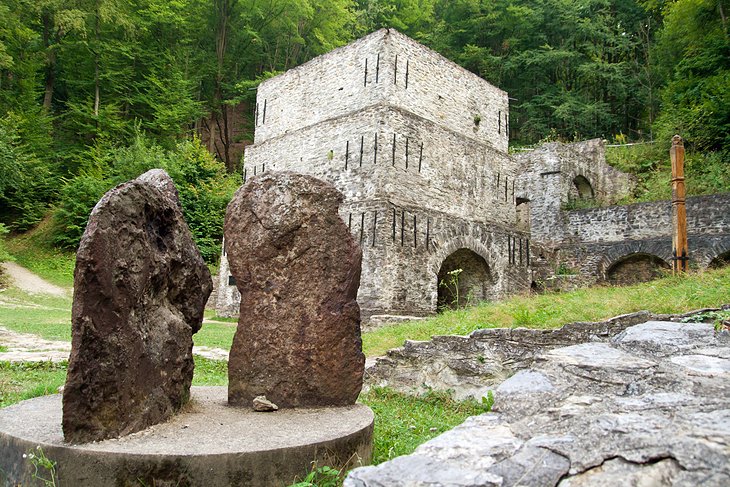
Count András Bethlen, the minister of agriculture, decided in the 1890s to build a holiday resort near Lake Hámori. The resort was named after his niece, Erzsébet (nicknamed: “Lilla”) Vay, who was the sister of the then-ispán, or count, of Borsod County, Elemér Vay. The Palace Hotel was built by István Bethlen.
The Palace Hotel was designed by Kálmán Lux and built between 1927 and 1930 in neo-Renaissance style. One of the hotel’s restaurants is named after King Matthias. Its stained glass windows show the castles of historical Hungary. The hotel is surrounded by a large park with rare plants.
The hanging gardens are below the hotel, between the streams Szinva and Garadna. The highest waterfall in Hungary, at 20 meters in height, can be found here. The waterfall itself is artificial. The internal water tubes form the “Anna Cave” at the bottom.
6.Hortobágy National Park
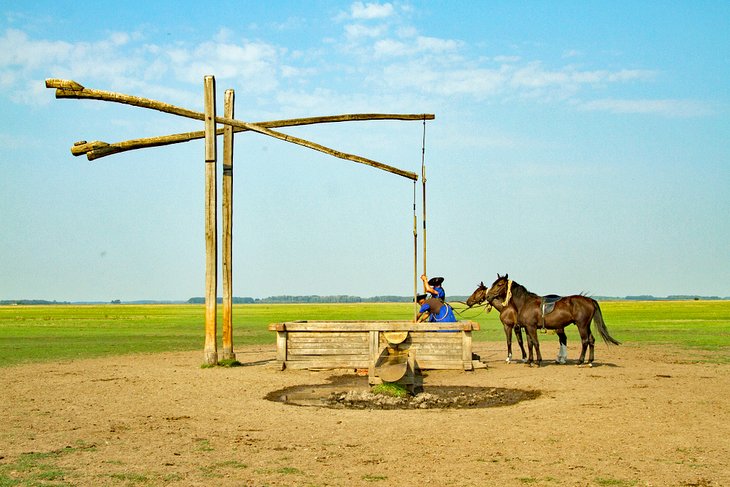
Hortobágy is an 800 km² national park in eastern Hungary, rich with folklore and cultural history. The park, a part of the Alföld, was designated as a national park in 1973, and elected among the World Heritage sites in 1999.
Established in 1973, the park is part of Hungary’s Great Plain, an area that’s protected as Europe’s biggest natural grassland. Highlights of a visit include catching glimpses of its diverse animal life, including everything from an abundance of birdlife to herds of horses can be seen here. Also fun is spending an evening in its dark sky preserve, which offers incredible stargazing opportunities without the distraction of city lights.
One of its most iconic sites is the Nine-holed Bridge. Traditional T-shaped sweep wells dot the landscape, as well as the occasional mirage of trees shimmering in the reflected heat of the puszta (steppe). Part of the national park is a dark sky preserve.
Hortobágy is a steppe, a grassy plain with Hungarian Grey cattle, racka, water buffalo, and horses tended by mounted herdsmen called Csikós. It provides habitat for various species including 342 species of birds. The red-footed falcon, stone curlew, great bustard and European roller are represented by breeding populations. The area is an important stopover site for migrating common cranes, dotterels, and lesser white-fronted geese.
7.Sopron
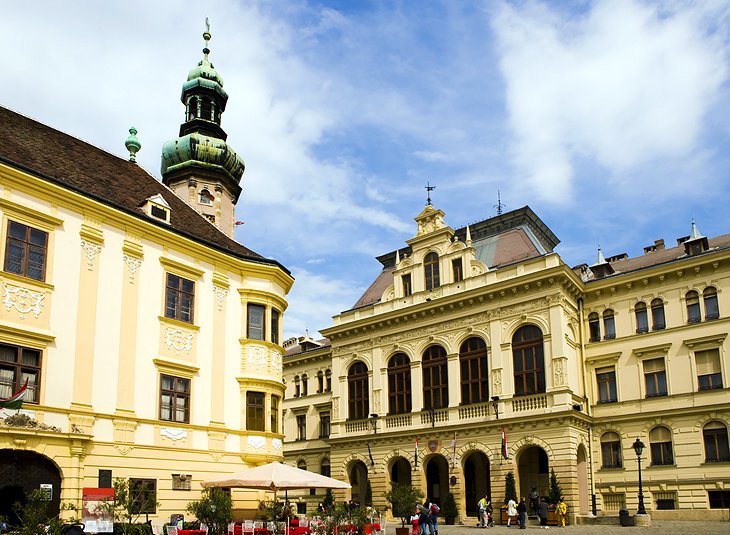
When the area that is today Western Hungary was a province of the Roman Empire, a city called Scarbantia stood here. Its forum was located where the main square of Sopron can be found today.
During the Migration Period, Scarbantia was believed to be deserted. By the time Hungarians arrived in the area, it was in ruins. In the 9th–11th centuries, Hungarians strengthened the old Roman city walls and built a castle. The town was named in Hungarian after a castle steward named Suprun. In 1153, it was mentioned as an important town.
Sopron is a city in Hungary on the Austrian border, near Lake Neusiedl/Lake Fertő.
Its allure stems as much from its attractive surroundings as from its many well-preserved medieval and Baroque buildings. Sopron boasts an impressive 240 protected buildings, 115 of which are officially listed monuments, making it one of the largest such collections in Europe.









